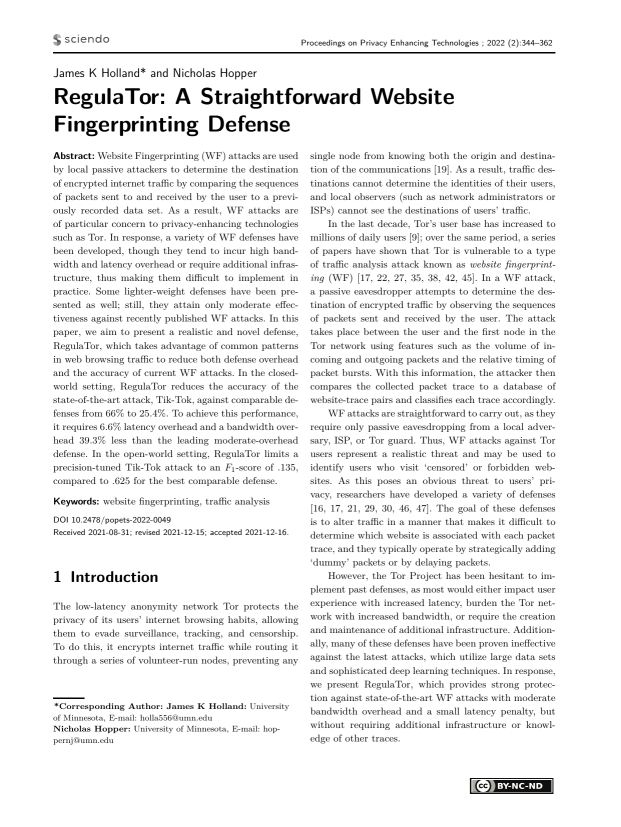RegulaTor: A Straightforward Website Fingerprinting Defense
Authors: James K Holland (University of Minnesota), Nicholas Hopper (University of Minnesota)
Volume: 2022
Issue: 2
Pages: 344–362
DOI: https://doi.org/10.2478/popets-2022-0049
Abstract: Website Fingerprinting (WF) attacks are used by local passive attackers to determine the destination of encrypted internet traffic by comparing the sequences of packets sent to and received by the user to a previously recorded data set. As a result, WF attacks are of particular concern to privacy-enhancing technologies such as Tor. In response, a variety of WF defenses have been developed, though they tend to incur high bandwidth and latency overhead or require additional infrastructure, thus making them difficult to implement in practice. Some lighter-weight defenses have been presented as well; still, they attain only moderate effectiveness against recently published WF attacks. In this paper, we aim to present a realistic and novel defense, RegulaTor, which takes advantage of common patterns in web browsing traffic to reduce both defense overhead and the accuracy of current WF attacks. In the closedworld setting, RegulaTor reduces the accuracy of the state-of-the-art attack, Tik-Tok, against comparable defenses from 66% to 25.4%. To achieve this performance, it requires 6.6% latency overhead and a bandwidth overhead 39.3% less than the leading moderate-overhead defense. In the open-world setting, RegulaTor limits a precision-tuned Tik-Tok attack to an F1 -score of .135, compared to .625 for the best comparable defense.
Keywords: website fingerprinting, traffic analysis
Copyright in PoPETs articles are held by their authors. This article is published under a Creative Commons Attribution-NonCommercial-NoDerivs 3.0 license.

